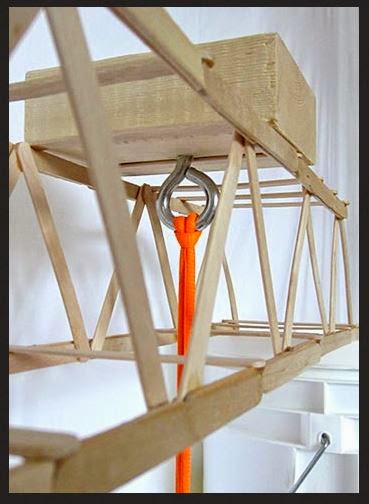Efficiency rating = Weight it can hold (up to 15 kg) / Weight of the bridge
Bridge HW Grade based on:
- 25% Design
- Creativity (your own design? or just something from the internet?)
- Aesthetic appeal
- Homogeneous distribution of weight
- 25% Use of materials (what material did you use, and why?)
- Cost efficiency (the cheaper the better)
- Strength/weight ratio
- bonding agents & designs
- 25% Efficiency rating
- Class weighted; Top 33% = A, next 33% = B, lowest 33% = C
- 25% Adhere to all of the rules
- It's long enough for the span?
- It is able to be loaded with the 5cm loading block?
Prize:
Person with the highest efficiency rating in each class does not have to take the final.
Basic set-up:
A 5cm by 5cm by 2 cm wood block with a hook in the center will support the weight (see the top green arrow)

Weight will be added to your bridge by adding sand to a bucket suspended to your loading block.


TuTh:
18 inch span
Wed. night
3feet span
** Your bridge will need to be slightly longer than what it needs to span! Span = the distance between the tables your bridge will be resting on.
Rules:
- The bridge will just rest on the table surface - you cannot anchor it with duct tape etc.
- You can make your bridge out of any material you want, but remember efficiency is determined by your bridge weight, so choose materials carefully!
- Failure will be defined by either the bridge breaking, or deforming more than 5 cm.
- You will need to fully load your bridge in 8 minutes or less.
Tips:
- Pay attention to your joints - make the connections solid!
- Use clothespins, bent hairpins, paperclips, or small C-clamps (from the dollar store) to hold pieces together while it dries:
- Wax paper makes a great building surface - the glue won't stick to it.

- Build it in sections - don't try to build it all at once!
Bring your bridge in to test:
- Tu/Th class - Thursday 11/13/2014
- Wed class - Wed 11/19/2014
Good luck!Wed
#1:



#2














No comments:
Post a Comment